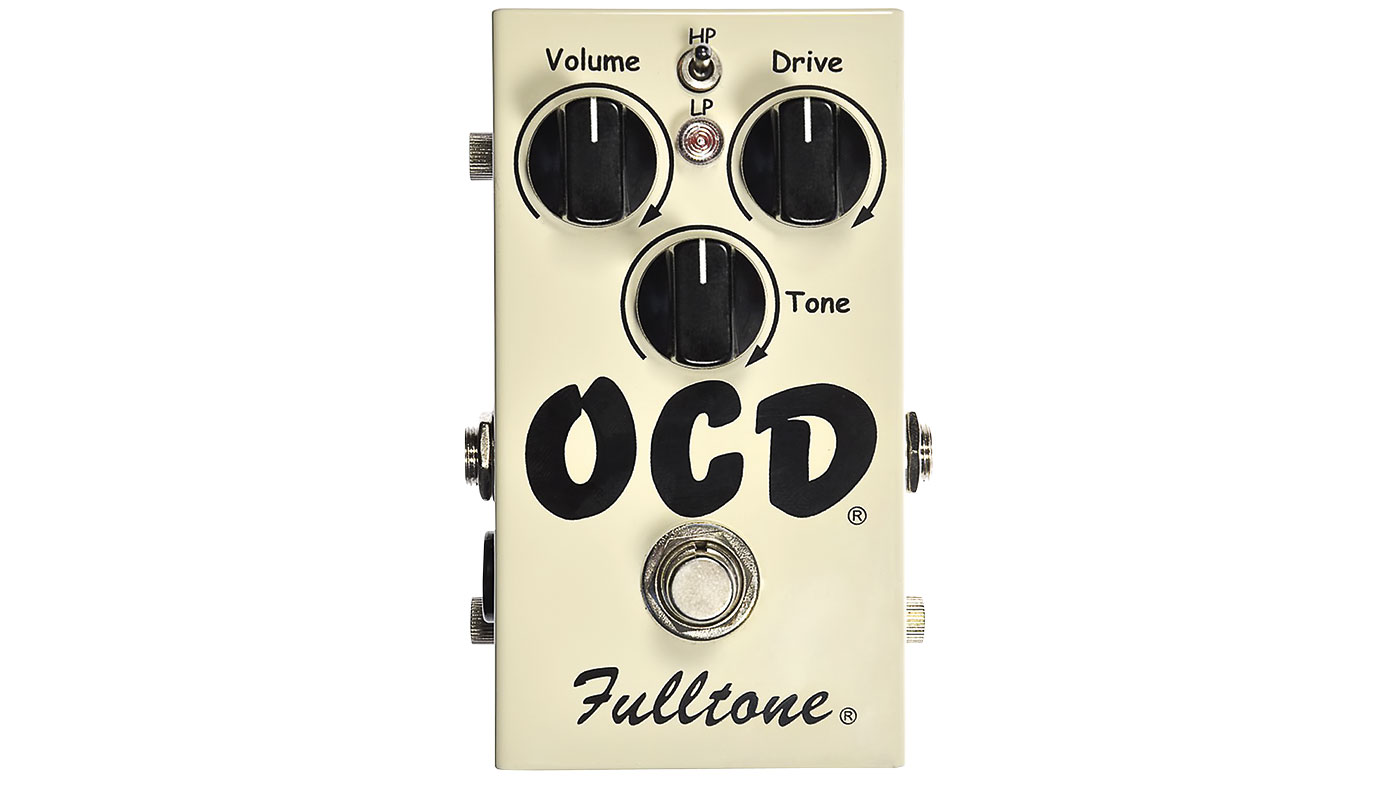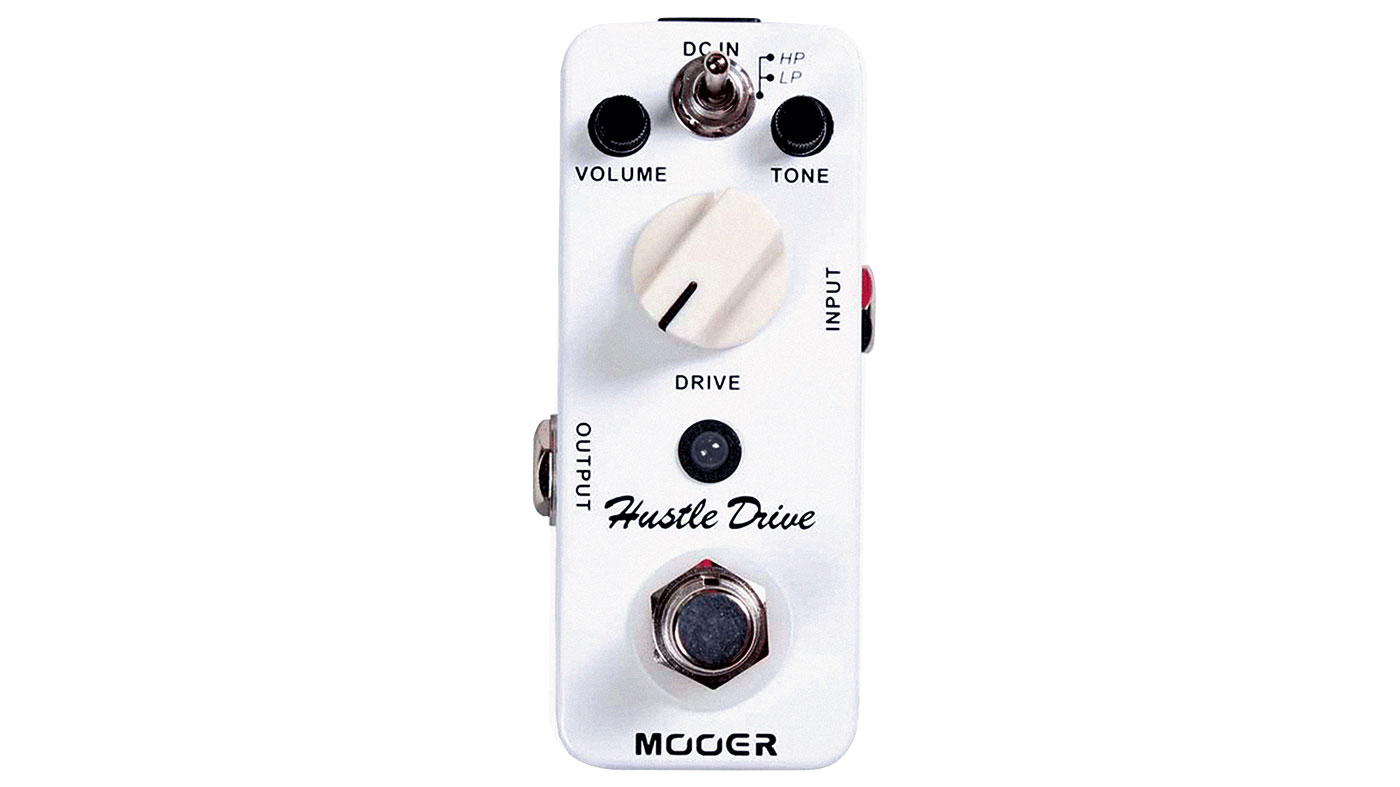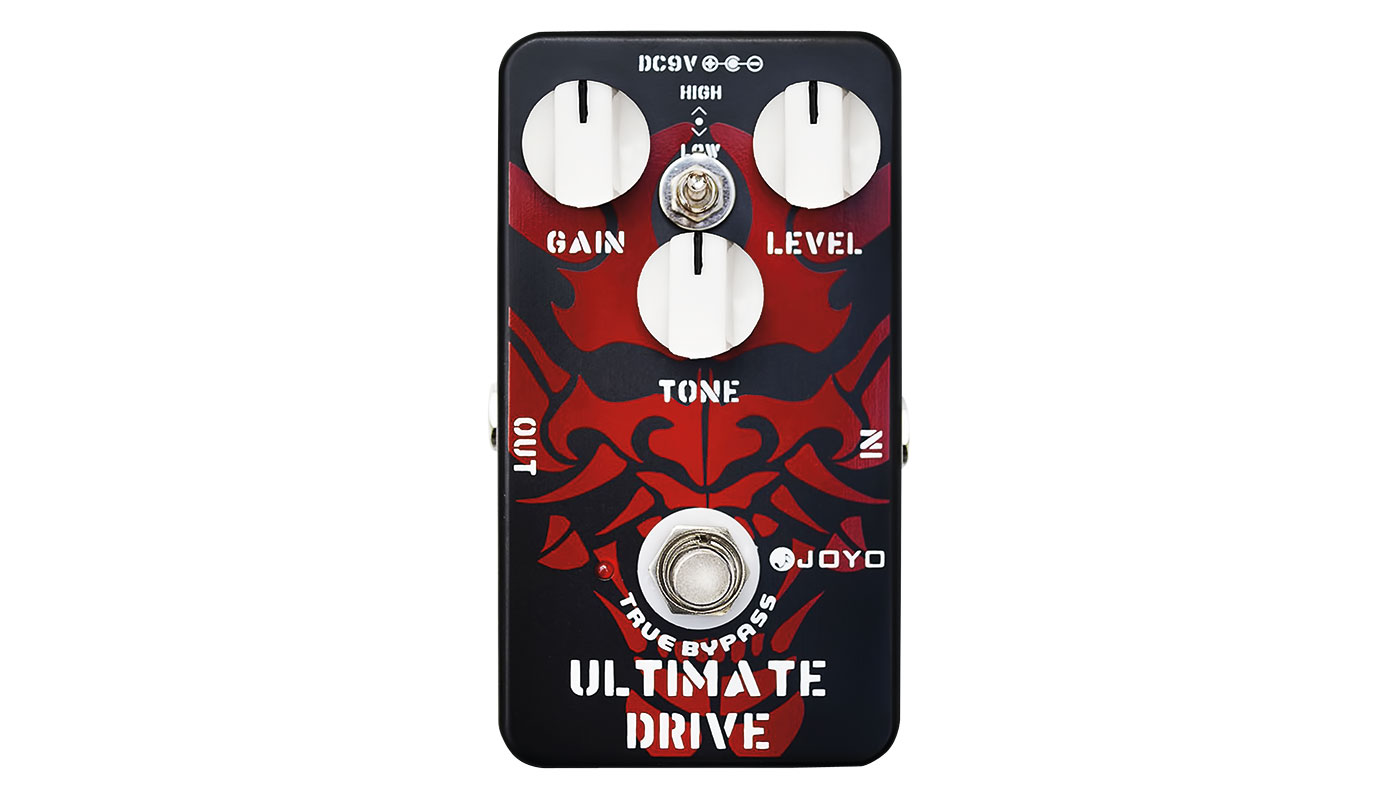The FX files: Fulltone OCD
We look at the history of the enduringly popular modern drive pedal

An op-amp based overdrive in the family tree of the Tube Screamer, the OCD is widely reckoned to be one of the most open-sounding drives on the market...
When Mike Fuller of Fulltone originally devised the OCD, he wanted an open-sounding distortion pedal with decent headroom to more faithfully emulate a driven tube amp.
This desire for extra headroom is why the OCD can be run from anything from 9-18V, with the pedal delivering a noticeably different, less compressed sound when run at the higher voltage.
The first version of the OCD featured an expoxied board, while later iterations would prove popular platforms for modding by the DIY community
Although this has never been confirmed by Mike Fuller himself, the OCD takes its driving inspiration from a now little-known pedal partly descended from the Ibanez Tube Screamer.
As can be discerned from looking at the schematics side-by-side, the original OCD is essentially a Voodoo Labs Overdrive, itself similar to a cascaded MXR Distortion+. Although the first version of the OCD featured an expoxied or ‘gooped’ board, later iterations would prove popular platforms for modding by the DIY community.
There have been seven distinct versions of the OCD, identifiable by the PCBs and layout on the inside, alongside visual cues like the size of the logo on the front panel.
The changes on the versions between 1.1 and 1.7 are relatively subtle, and are mainly component value tweaks to slightly alter the EQ response. The most interesting change is on version 1.3 - increasing the drive pot to 1M for more sustain, and the addition around 1.4 of a germanium clipping diode.
Want all the hottest music and gear news, reviews, deals, features and more, direct to your inbox? Sign up here.
The leap that was made with version 2 brought even more dramatic change. The three key differences are a new output buffer, a discrete 2N5457 JFET transistor input stage, which raises the input impedance significantly - as you’d find on an Echoplex or Space Echo preamp - and the option to use a new type of switching, called enhanced bypass, instead of true bypass.
Drive
The clipping waveform distortion on the OCD is delivered by two 2N7000 transistors after the first stage, with the Drive control determining how much the signal is amplified before it hits this point.
After the first version, the drive pot had its value bumped for more dramatic distortion, and on later iterations of the pedal an asymmetric 1N34 germanium diode was controversially added to more dramatically shift the character of the clipping. In the DIY community, the pre-germanium version remains more popular to build.

Tone
The tone control is essentially a treble roll-off. Although a fair bit of treble is filtered at the main amplification stage, the tone control is used to remove treble above a fixed frequency right before the output of the pedal.
HP/LP switch
The HP/LP switch isn’t a high-pass, low-pass selector as the abbreviations imply, but instead selects between different frequencies to use at the shelving frequency for the Tone control.
For most players, guitars and pickup combinations, the HP, or higher, frequency should be the better option, but like most things it’s about personal taste.
Under the influence

EHX Glove
£64
One of the characteristic elements of the OCD’s clipping is that, when run at 9V, much of the clipping comes from the op-amp itself. The EHX Glove resolves this with an internal charge pump, which bumps the circuit internally from 9V to 18V, from the ‘Super OCD’ modded OCD designed by Fred Briggs.
Sadly, it doesn’t include Fred’s additions of a dedicated bass or higher-quality op-amp, but it’s still a great-sounding drive.

Mooer Hustle Drive
£43
Small but perfectly formed, this diminutive and affordable pedal is allegedly a direct clone of the OCD.
However, if we were judging the Mooer Hustle Drive by the lower-gain sounds on offer, it would more accurately be described as a clone of the original version of the pedal, before the gain potentiometer was bumped up in value, though it is possible that this might just be our ears playing tricks on us. At this price though, it’s worth taking the punt.

Joyo Ultimate Drive
£32
It may look an aesthetic atrocity, but beyond the gross exterior, the Joyo Ultimate Drive is a clear descendant; in fact, an OCD version 1.4 clone with slight component tweaks.
Interestingly, for the first few years of manufacture, the germanium diode was incorrectly oriented, meaning the pedal had a sound all of its own. This was later corrected, returning it closer to the sound of the original.
Classic tones
Get the tone #1: classic rock Les Paul rhythm guitar
Into a clean Marshall-style amp you can get some dark rhythm sounds with a neck pickup and this setting. Increase the tone at the pedal, and roll off at the guitar and you get some Billy Howerdel-style mid-2000s rhythm tones too.
- Volume: 10 o’clock
- Drive: 2 o’clock
- Tone: 2 o’clock
- Toggle: to LP
Get the tone #2: Les Paul lead
With a humbucking guitar in the bridge position, start with this setting for some classic, powerful leads. With a hotter amp, pull back the volume as required. Try running the pedal at 9V in order to get some pre-amp compression, then adjust tone and drive to tame the highs as required.
- Volume: 11 o’clock
- Drive: 10 o’clock
- Tone: 1 o’clock
- Toggle: to HP
Get the tone #3: dark single coil
Depending on your amp, you might have to tweak the volume and gain slightly, but this is a good starting point for experimenting with darker, thumpier blues tones. Particularly when run at the higher voltage, a neck single coil will really sing when given just a bit of hair by the OCD.
- Volume: 1 o’clock
- Drive: 11 o’clock
- Tone: 1 o’clock
- Toggle: to LP
Alex Lynham is a gear obsessive who's been collecting and building modern and vintage equipment since he got his first Saturday job. Besides reviewing countless pedals for Total Guitar, he's written guides on how to build your first pedal, how to build a tube amp from a kit, and briefly went viral when he released a glitch delay pedal, the Atom Smasher.


